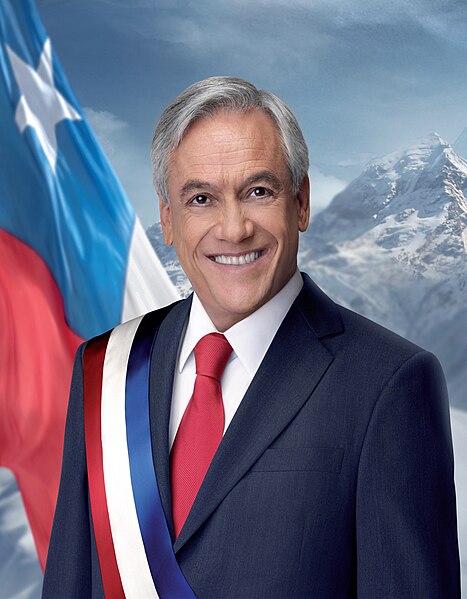 |
| La Moneda palace |
Santiago, also known as Santiago de Chile, is the capital and the bigest city of Chile. It is located in the country's central valley, at an elevation of 520 m (1,706.04 ft) above mean sea level.
 |
| Santiago is located in the middle of the country |
It's surround by the range of the Andes on the east and the Chilean Coastal Range on the west. On the north, it is bounded by the Cordón de Chacabuco, a mountain range of the Andes. The Andes mountains around Santiago are quite tall; the tallest of which is the Tupungato volcano at 6,570 m (21,555 ft).
The Santiago Basin is part of the Intermediate Depression, interrupted only by a few hills; among them are Cerro Renca, Cerro Blanco and Cerro Santa Lucía. This basin is approximately 80 km in a north-south direction and 35 km from east to west.
 |
| Cerro San Cristóbal |
During recent decades, urban growth has expanded the boundaries of the city to the east closer to the Andean Precordillera. Areas called La Dehesa, Lo Curro and El Arrayan has been reached to overcome the barrier of 1000 metres of altitude
There is a famous hill, called Cerro San Cristobal, which is a low-latitude ridge of the Andes Mountains, which enters the basin and emerges in northeast of the city.
History: Santiago was founded by Spanish Conquistador Pedro de Valdivia on February 11, 1541 with the name Santiago de Nueva Extremadura, as a homage to Saint James and Extremadura, Valdivia's birth place in Spain. The founding was held on Huelén Hill (now called Cerro Santa Lucía).
 |
| City foundation |
The new town consisted of straight roads of 12 varas (14.35 m, 47.1 ft) width, in equal intervals of 138 varas (165.08 m, 541.6 ft) perpendicular to each other. With nine roads in the east-west direction and 15 in the north-south direction.
 About the president
About the president Sebastián Piñera took office on March 11, 2010, as the first president to be elected democratically rightsince 1958 and the first year since Pinochet left office in March 1990.

